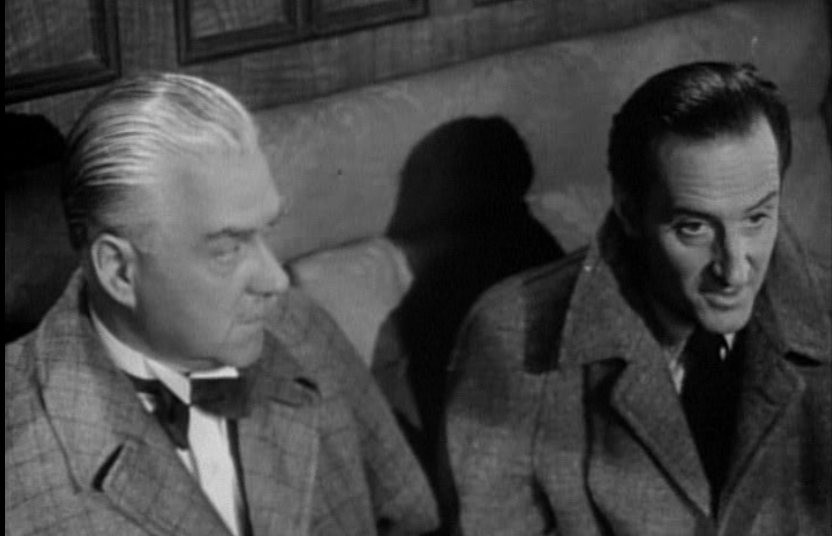Movie Review: Terror by Night (1946) directed by Roy William Neill
The Star of Rhodesia, a large diamond, has long been associated with blood and death, bringing woe to its owners and those around them ever since it was dug up. The current owner is Lady Margaret Carstairs (Mary Forbes), a formidable dowager. Her son Roland Carstairs (Geoffrey Steele), fearing that the diamond is the target of thieves (a recent robbery attempt was made) has engaged consulting detective Sherlock Holmes (Basil Rathbone) to protect the diamond on the overnight train from London to Edinburgh. Naturally, where Holmes goes, Dr. John H. Watson (Nigel Bruce) follows. Inspector Lestrade (Dennis Hoey) is also on board, ostensibly going fishing up North.

A few hours later, Roland is dead, and the Star of Rhodesia is missing. Holmes and his friends must sort out the matter. Since they’re on a train, the possible suspects are limited, but there’s a high percentage of shady characters. There’s a hard-faced young woman who’s escorting her mother’s coffin, a mathematics professor who objects strenuously to being questioned, one of Watson’s military acquaintances who has a gambling habit, an elderly couple who are visibly nervous about Scotland Yard being present, and Lady Carstairs herself seems more upset about the diamond theft than her son’s murder! Even the baggage car guard takes on a sinister aspect.
This was one of the last Basil Rathbone Sherlock Holmes films; the writing team was running thin on ideas, and Mr. Rathbone wanted to do other things. (Nigel Bruce was already typecast so stayed on as Watson for the radio show.) It’s also set in “the present day” to save money on costuming and sets. It’s a short film, just under an hour, but doesn’t feel rushed.
Holmes is, as always, the smartest man on the train, well ahead of everyone except the murderer, and even then catches up quickly. Once he breaks the alibi problem, the movie just goes ahead and shows us the baddie, though the characters in the story have to wait for Holmes’ reveal. Poor Watson is particularly dim, engaging in an affable argument about whether the rice or the spice blend is most important in a good rice curry with his fellow veteran of India rather than observe his surroundings. (Holmes himself does not like curry, preferring steak and kidney pie.) Lestrade isn’t much smarter, but does get a moment when he grasps Holmes’ plan and gets to triumph for a change.
The movie’s title is a bit of an exaggeration, though there is a tense sequence where Holmes finds himself on the outside of the train, and not by choice.
My copy of the movie came with a short film of Sir Arthur Conan Doyle late in his life talking about the origins of Sherlock Holmes and (much more enthusiastically) his interest in psychic phenomena.
It’s not top-rate, but this is a pleasant enough movie, and due to its shortness would pair well as a double feature with another old-fashioned mystery or movie set on a train.
Late thoughts: A modern remake would have the severe handicap that Basil Rathbone and Nigel Bruce are the primary reason to see this movie. Watson’s part in particular would need massive rewriting. To create a more interesting movie, I’d suggest focusing much more on the Star of Rhodesia’s backstory and the bloody legacy of colonialism.

